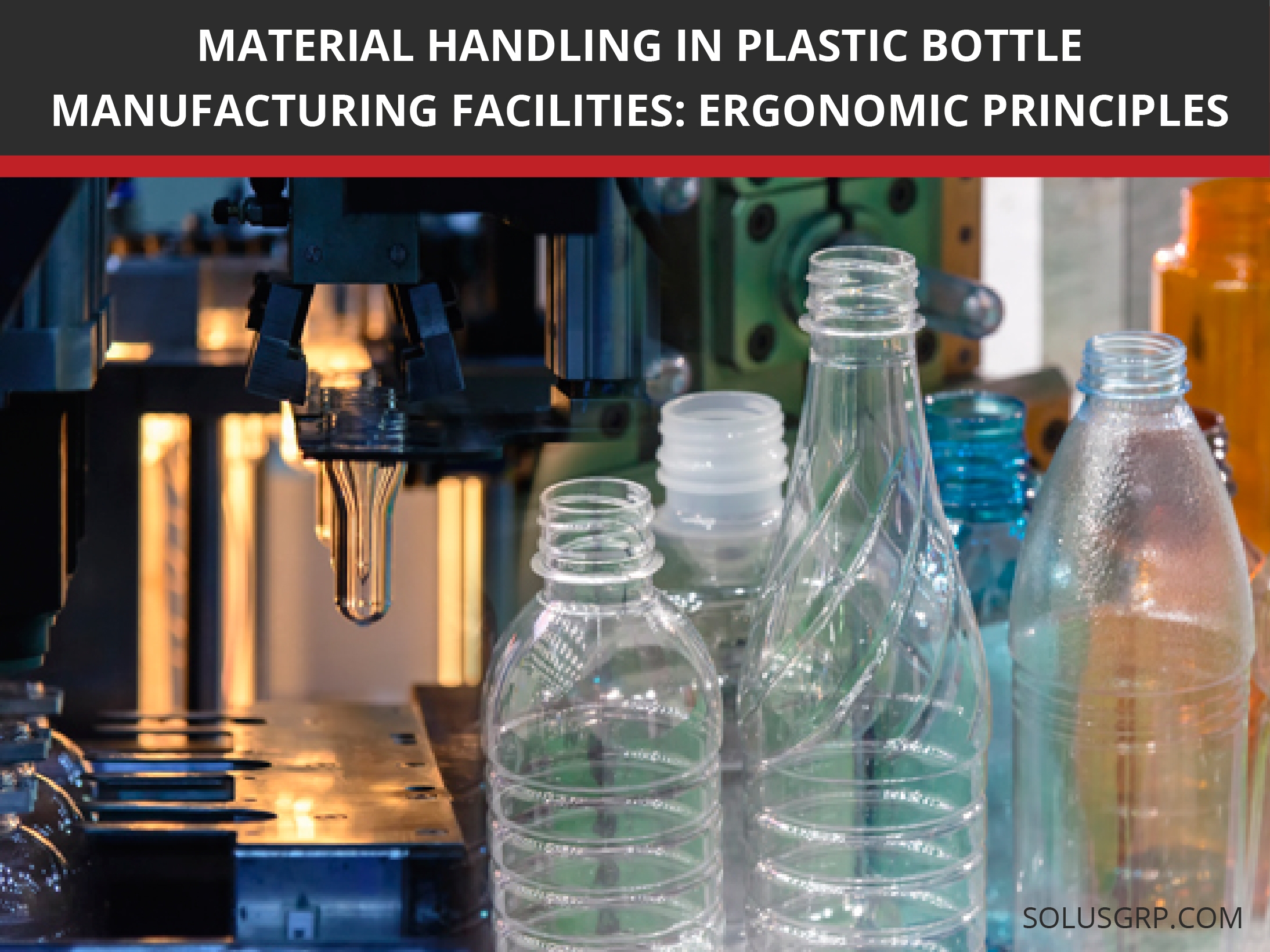We use cookies to make your experience better. To comply with the new e-Privacy directive, we need to ask for your consent to set the cookies. Learn more.
Material Handling in Plastic Bottle Manufacturing Facilities: Ergonomic Principles
Small plastic bottles don't always make for easy material handling, as any manufacturer could tell you. Bottles themselves are small enough, but the caps prove especially difficult to move in bulk. Too often, these difficulties are passed onto employees, who might have to engage in ergonomically risky movements — repeated motions, lifting heavy loads to transfer product — to keep the line moving.
The solution is, of course, ergonomic intervention. One of the quickest ways to improve safety for manufacturers of small HDPE and other plastic bottles is to redesign the workstation. That means introducing specialized material handling equipment that's designed to move small objects in bulk loads. But which equipment is right for the job? Consider these three principles when choosing ergonomic material handling equipment for a plastics manufacturing facility:
- Start with the heart of ergonomics: matching the process environment to the worker.We often define ergonomics as "matching the work to the worker," and when we design manufacturing lines with this thought in mind, we can prevent injuries and improve productivity.

The statistics bear this out. As ergonomic practices spread in the manufacturing realm, injuries decrease. In 2016, the latest year for which the Bureau of Labor Statistics provides full data, strains, sprains, and tears of the sort associated with ergonomic hazards represented 30 percent of the total occupational injuries requiring days away from work in manufacturing. That's a rate of 28.2 cases per 10,000 full-time employees, which is still unacceptably high. But it's also lower than the 2015 rate of 30.3 cases per 10,000 workers.
Design workstations to avoid exposure to force, repetitive motions, uncomfortable postures, and long-term vibration. In the plastics manufacturing industry, this often comes down to replacing physical labor with material handling equipment. - If the manufacturing process does not require the constant use of a piece of material handling equipment, choose a product that is flexible enough to pull double duty.Flexibility is key to deriving full value from material handling equipment. Take pill-bottle caps, for instance. Once they move through the cooling line, you might collect them in industrial bins or Gaylord boxes. Then what? How do you move the contents of a full box into a sorting funnel or straight to order-packing stations?
Bin Dumpers — industrial machines designed to lift and empty large-scale containers — solved the problem without subjecting staff to risky actions like lifting heavy loads, holding items over the head, and twisting the body awkwardly. And between dumping loads of pill bottle lids, fork pockets and heavy-duty casters make the Bin Dumper easy to move to other parts of the facility. It is therefore able to help employees collect recyclable scraps, empty full trash cans, and still be back on the line in time to catch the next batch of pill bottle caps. That keeps the equipment working, which speeds up the ROI on your investment. - Use adjustable design in manufacturing lines.The more you can personalize your workstations, the better your ergonomics. That's because every worker's body is different. A sorting line that's waste-high for one employee may be far too low for the next. Lift tables and other adjustable work surfaces ensure that every member of your staff can find a perfect fit.
Plastics manufacturers may handle product of all shapes and sizes, leading to distinct material handling challenges. In order to keep staff healthy, and to maintain peak efficiency, managers need to choose material handling equipment that's specially suited for their applications. For manufacturers of plastic bottles and bottle caps, Bin Dumpers provide ideal solutions.
References:
"Ergonomics and Musculoskeletal Disorders." CDC. Centers for Disease Control and Prevention, 3 Mar. 2018. Web. 9 Apr. 2018.
Stephens, Matthew P. and Fred E. Meyers. Manufacturing Facilities Design & Material Handling. vol. Fifth edition, Purdue University Press, 2013. EBSCOhost.
"Employer-Reported Workplace Injury and Illnesses, 2016." BLS. Bureau of Labor Statistics, 11 Sept. 2017. Web. 9 Apr. 2018.
